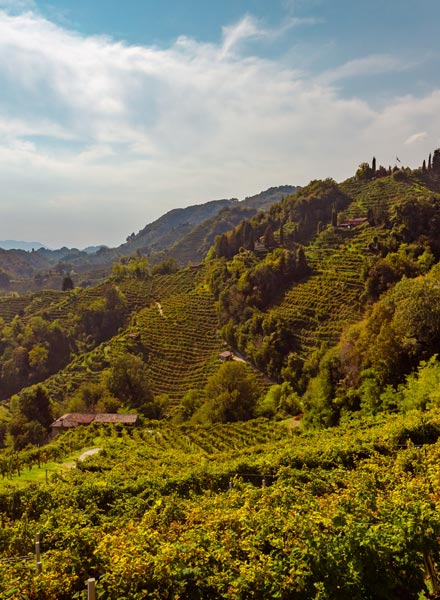OUR LAND
A unique and distinctive habitat
Giovanni Bonifaccio, Istoria di Trevigi, 1591
Conegliano Valdobbiadene Prosecco Superiore DOCG
Between the 17th and 19th centuries, the landscape of the Conegliano Valdobbiadene Superiore hills was shaped into the salient features that we see today: the presence of “grassy terraces”, also known as “Ciglioni”, i.e. systems that model the territory for wine growing where the land slopes steeply; the use of the “Bellussera” vine-growing system, which has contributed to giving the vine-covered landscape certain aesthetic features; and lastly the “mosaic landscape”, i.e. the coexistence in a natural setting of vineyards alternating with woodland areas, dotted with small villages and rural dwellings.
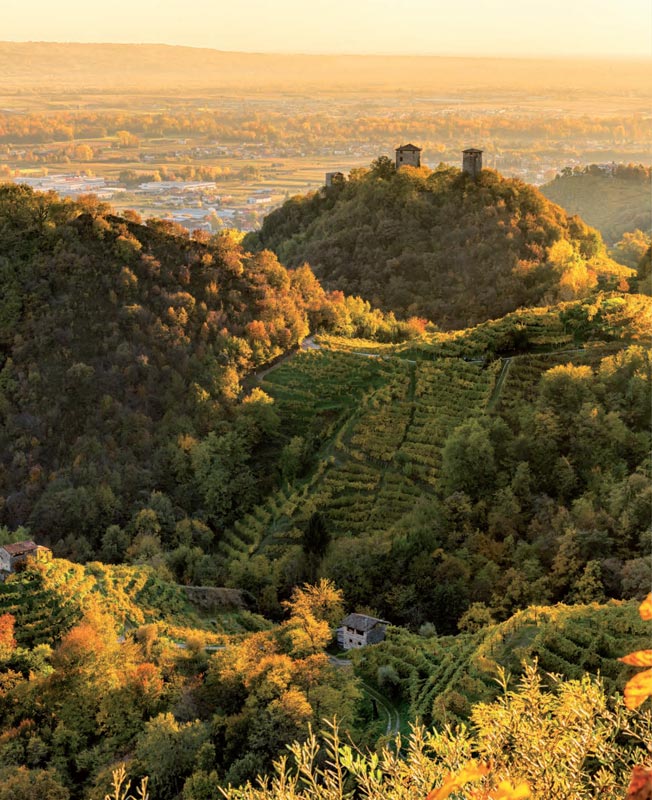
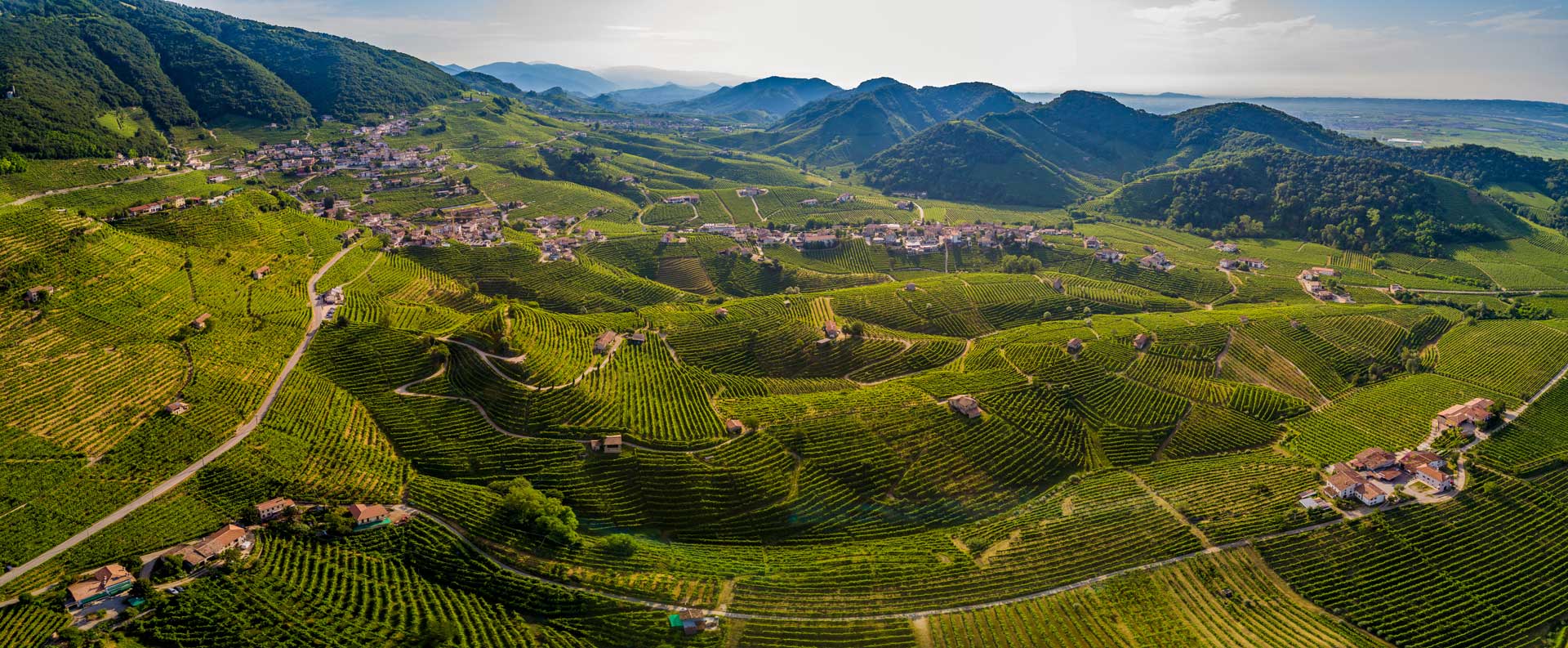
The Conegliano Valdobbiadene Prosecco Superiore area is a hilly land located in north-east Italy (latitude 45° 52’ 40” N, longitude 12° 17’ 5” W) and has an altitude that varies between 70 and 450 metres above sea level.
Behind this territory lie the Treviso Prealps, the series of mountains that run like a rock wall from Monte Cesen to Col Visentin. This mountain chain runs parallel to the hilly axis of the DOCG territory and acts as protection from the cold north-east winds.
The climate in the arc of hills running from Conegliano to Valdobbiadene is a privileged one: the seasonal variations are limited with temperatures that create substantial variations between night and day
.
The “Rive” refers to a small area with all the attributes for growing fine grapes. It is sloping, with good exposure to the sun and ventilation and usually the yield per vine is very low. Each rive is given a name that identifies a given attribute.
It is the farmer who has preserved this precious and special territory with his way of “working the vines”, and it is his dedication that has made it possible to maintain the land from erosion and organic impoverishment.
The Rive is therefore a specific territorial identity where there is a distinct recognition in terms of uniqueness and quality which is reflected in the grapes and in the fine wines.
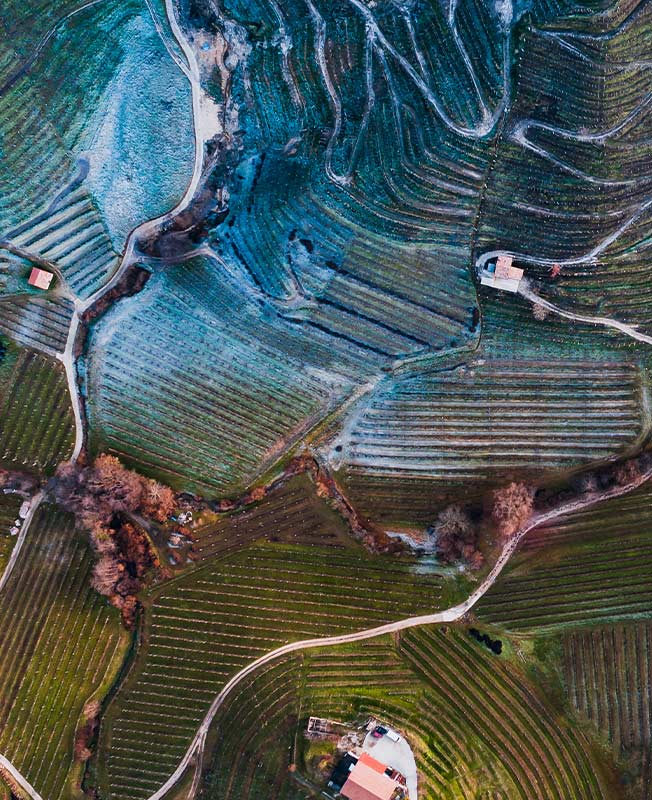
Sandstone and marl soils
These are present at the highest altitudes of the northern area; often with good structure and depth, but in other situations with the mother rock practically outcropping.
Soils of morainic origin
These can be found in the Ogliano and Vittorio Veneto areas. They were generated by the melting of the Lapisino branch of the ancient Piave glacier.
Cement and sandy conglomerates
Present in the whole southern band of the territory and originating from rocks of the Pliocene era (the period between 5.3 and 2.5 million years before present).
“…because in your silence there is joy”
Andrea Zanzotto
UNESCO World Heritage Site
In 2019, following a long process lasting more than ten years, the territory known as “Le Colline del Prosecco di Conegliano e Valdobbiadene” was added to the list of UNESCO World Heritage SitesUNESCO
The site is located in north-eastern Italy, in the north-eastern part of the Province of Treviso. The area designated by UNESCO covers a range of hills that extends from the municipality of Valdobbiadene to Vittorio Veneto. It then drops towards the south taking in large areas of the municipalities of Conegliano, Susegana and San Vedemmiano.
The special morphology of this territory offers views and panoramas of almost mountain-like landscapes with uninterrupted alternations of forests, vineyards, small rural settlements and farmland.
The unique features found in this area and those that have been enshrined in the UNESCO World Heritage Site entry are:
Hogback, Ciglione and the Mosaic landscape
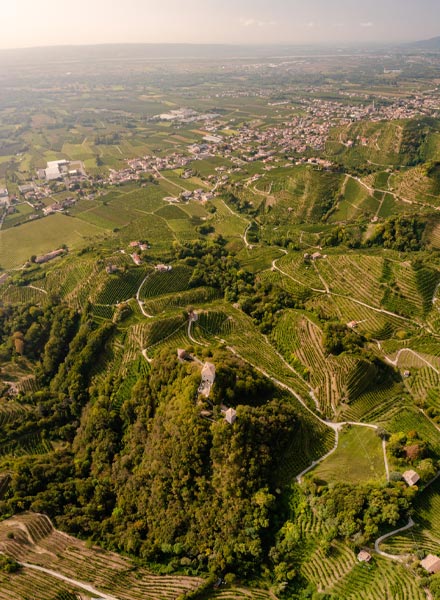
Hogback
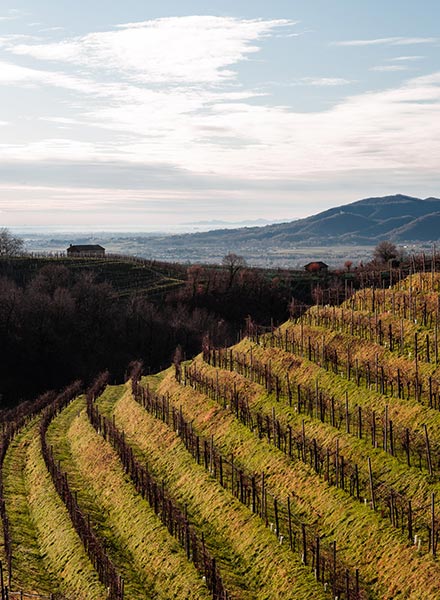
Ciglione
